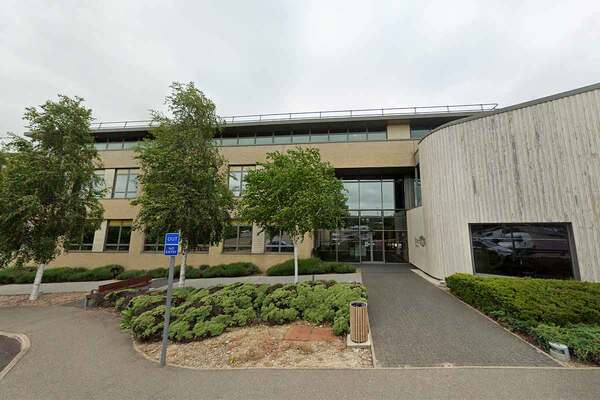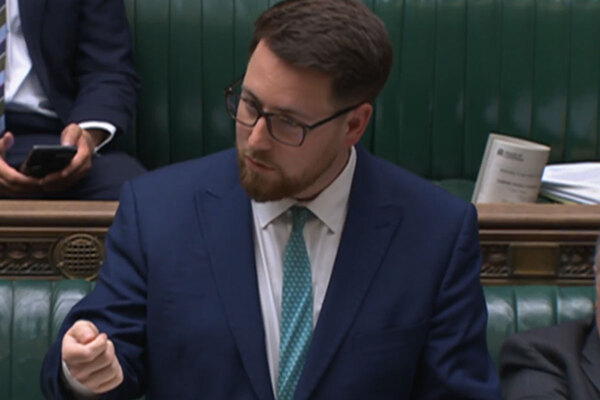How can social landlords use data to improve the tenant relationship?
Better data collection and how you use it can improve the relationship between social landlords and residents, explains Glenn Allan of technology and services business Capita One

In association with:

The government’s Social Housing White Paper aims to reform the relationship between social landlords and their tenants through greater transparency, engagement and accountability – something that will require new ways of working across the sector. Glenn Allan of Capita One explains more.
What role does data play in making these reforms a reality?
When it comes to improving landlord/tenant relationships, data can sound so cold and scientific, but when applied effectively, it holds endless possibilities for the sector in relation to delivering on the Social Housing White Paper reforms. The reforms concentrate on a number of key areas, including ensuring tenants feel safe in their homes and that they have a better understanding of how well their landlord is performing in comparison to other landlords, as well as ensuring their concerns and complaints are addressed quickly, and that they feel respected and heard.
Better data collection, when input into a housing management system, can enable landlords to store in-depth tenant information over a longer period of time, which can then be used to analyse and create actionable insight to help deliver these critical reforms.
What different types of tenant information could this data collection cover?
A broad housing management system can hold all sorts of tenant data. For example, in terms of social care, you could collect data on whether that tenant has had any interventions, whether they are involved with drug and alcohol counselling, or whether they have previously been in an abusive relationship. Similarly, where appropriate, it can be linked to other members of their family or tenancy to make sure as much information
as possible is stored in relation to that tenant.
While this information is protected under GDPR due to its sensitivity, it can be used by landlords to tailor the services they provide, so long as they come up with a compelling case as to why they need to store it – and ultimately the answer to that is to provide tenants with a better quality, more tailored level of service.
From your experience of working in the social housing sector, do landlords currently have the ability to capture and use data in this way?
Landlords are at different stages on this journey, but generally the sector has been pretty slow-moving in this data-driven space. I joined Capita almost 11 years ago, after working for a housing association, and at that time, senior leaders in the sector seemed enthusiastic about data and its potential in terms of improving their understanding and engagement with tenants. However, very few actually took it up.
As a result, the data analysis that goes on in the sector today still tends to be very static. So, it’s more about reporting on figures after they’ve happened, rather than actually taking the data to proactively and scientifically analyse it to then drive business decisions.
How could landlords go about collecting and managing this type of in-depth tenant data?
In addition to the traditional methods of tenant profiling that landlords carry out – such as tenant questionnaires and surveys – landlords could link in with other agencies to improve the validity of their tenant data/information. These agencies could include the police or social services, if permission was granted.
All of this tenant data, along with the landlord’s property information – ranging from compliance, repairs, energy efficiency and more – can be input and managed through a housing management system such as Capita’s One Housing Solutions.
The added benefit of our system is that it’s able to bring together all of these datasets for the type of in-depth analysis that I’ve described. It also has the ability to have custom fields so if there’s an element of data collection missing, you can configure part of the system.
For example, during COVID-19, housing management systems may have been unable to track tenants who had been furloughed, or those who were self-isolating. Our system, however, is adaptable, so it allows landlords to add/track new external factors without needing to issue new software.
How could this improve tenant communication and tenant feedback?
The way you contact a tenant and the time that you contact them has a big weighting on whether they’re going to interact with you. In-depth tenant information, such as their preferred method of communication or looking at their particular environment – for example whether they have family members with special needs – can ensure landlords are contacting their tenants in a way and at a time that works best for them. Again, this is all about delivering a far more tailored service.
An example of this in action was a small project we worked on around rent arrears profiling, where we segmented tenants into certain communication categories depending on their age. So, if a person was under 25 years old and fell into arrears, they received a text, if they were between 25 and 55 years old, they received a phone call and if they were over 55, they received a letter. Obviously, this was quite simplistic, but it demonstrates how data can be used to boost tenant engagement.
In terms of improving feedback, our system has survey functionality built into it, so repair satisfaction surveys can be sent out automatically after a job is complete, for example. That tenant feedback is then automatically allocated to the repair, which in turn reduces the chance of human error compared with if the information had been manually inputted.
How does this tie in with the wider measures laid out in the government’s Social Housing White Paper, such as ensuring residents have safer homes and living environments?
A key element to delivering on this reform is collecting and considering tenant and property data alongside one another, rather than looking at information in silos. If done well, it could bring multiple benefits.
One example of this is in relation to energy efficiency. Our system has the ability via a third party to deliver energy performance information on a property. At the same time, we are able to compare that with the tenant’s energy consumption, which could show the tenant is living in a house categorised as energy efficient, while also having high energy bills.
From this, we could look at some of the causes and analyse whether the property is being heated properly, whether or not this is causing dampness/poor living conditions, or whether it is affecting the property’s infrastructure. Further areas could be tracked, such as what type of insulation or boiler is being used, right down to the light bulbs that are installed.
This would paint a complete picture of the energy supply and demand, which would look after the condition of the property and help the tenant to budget more accurately, reducing the risk of problems like fuel poverty.










